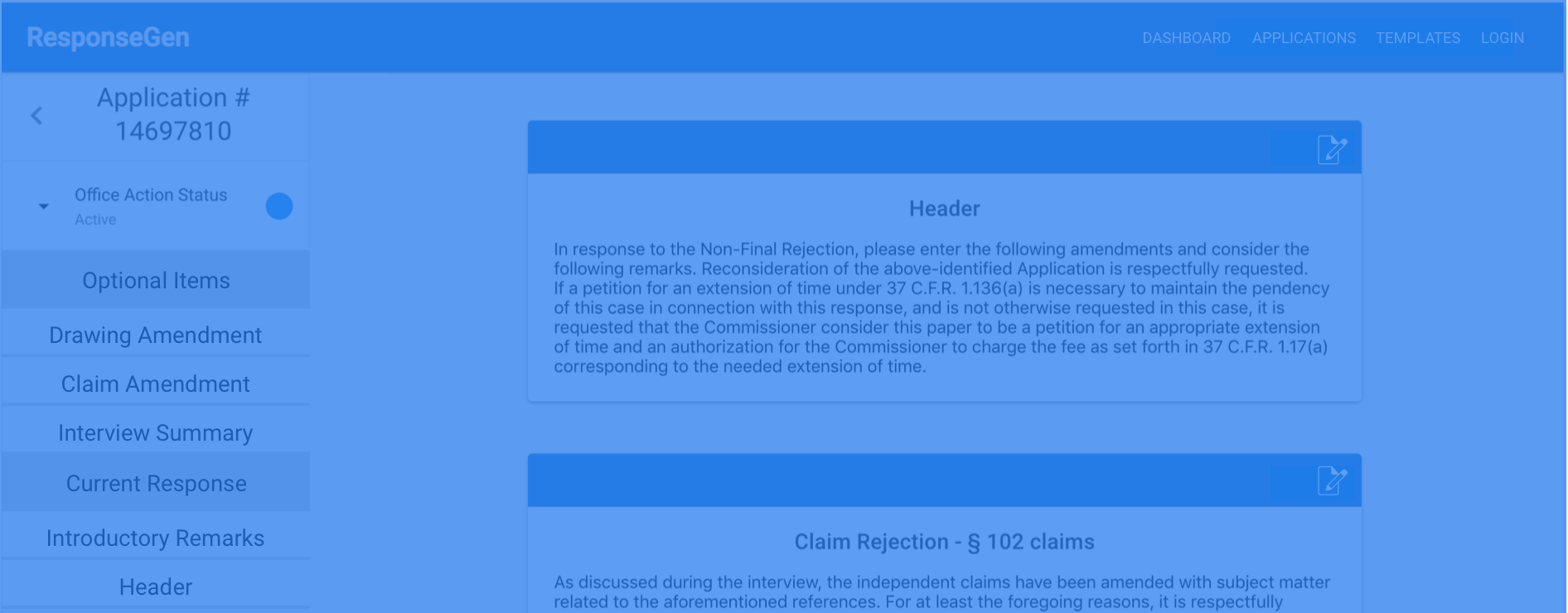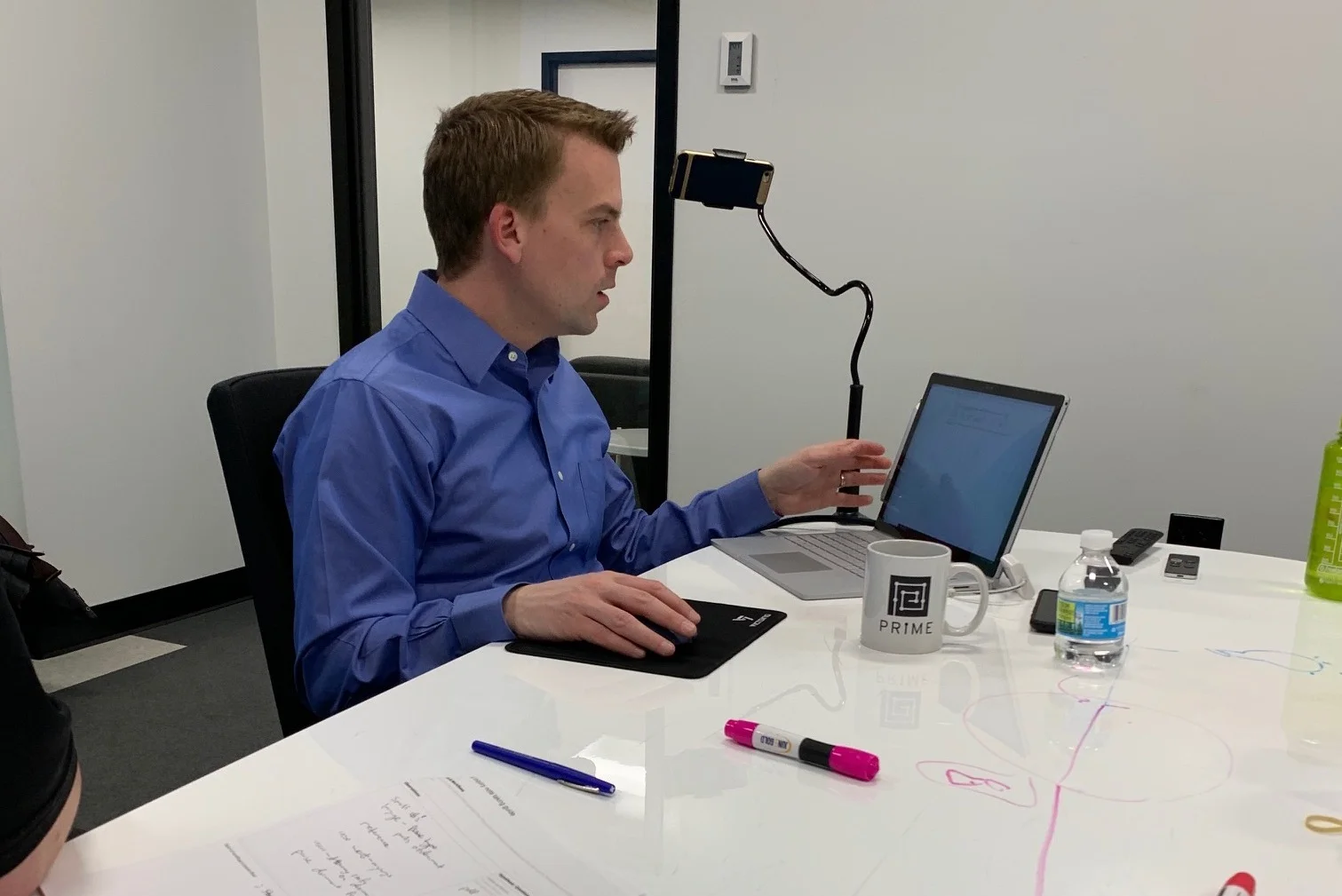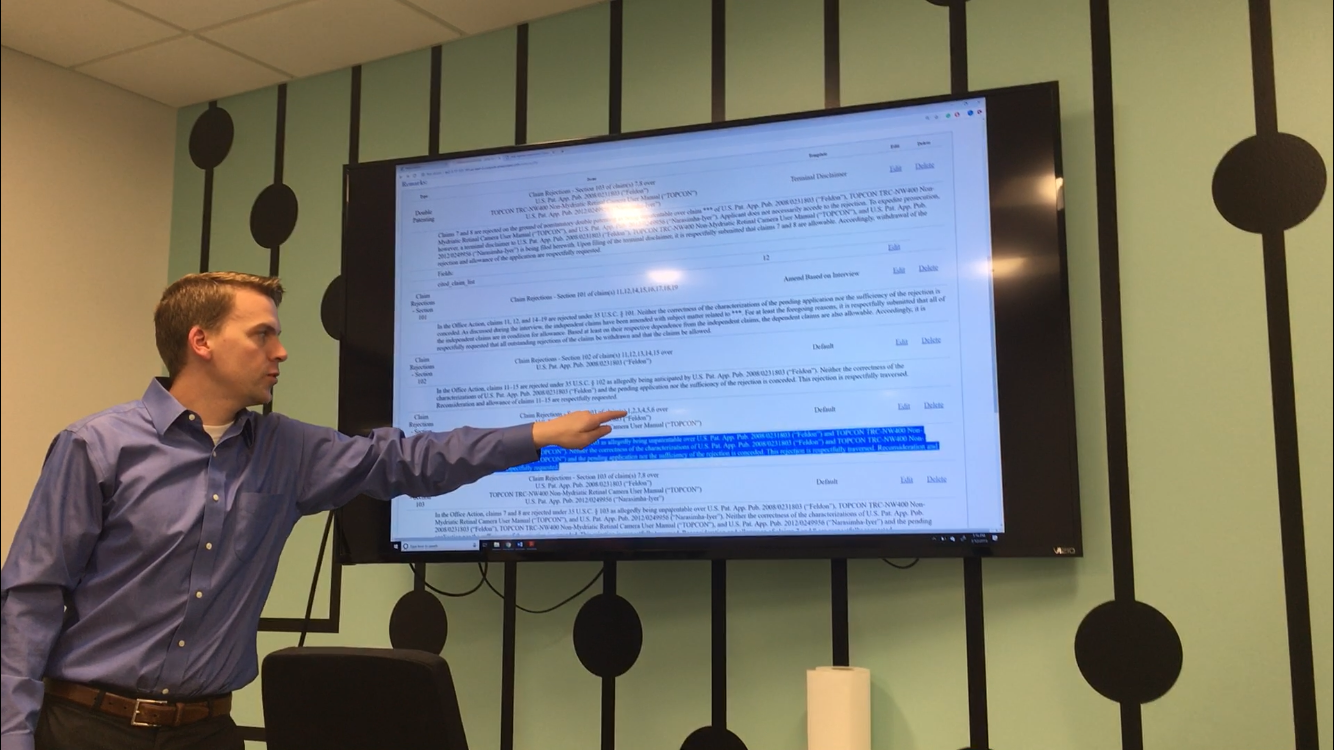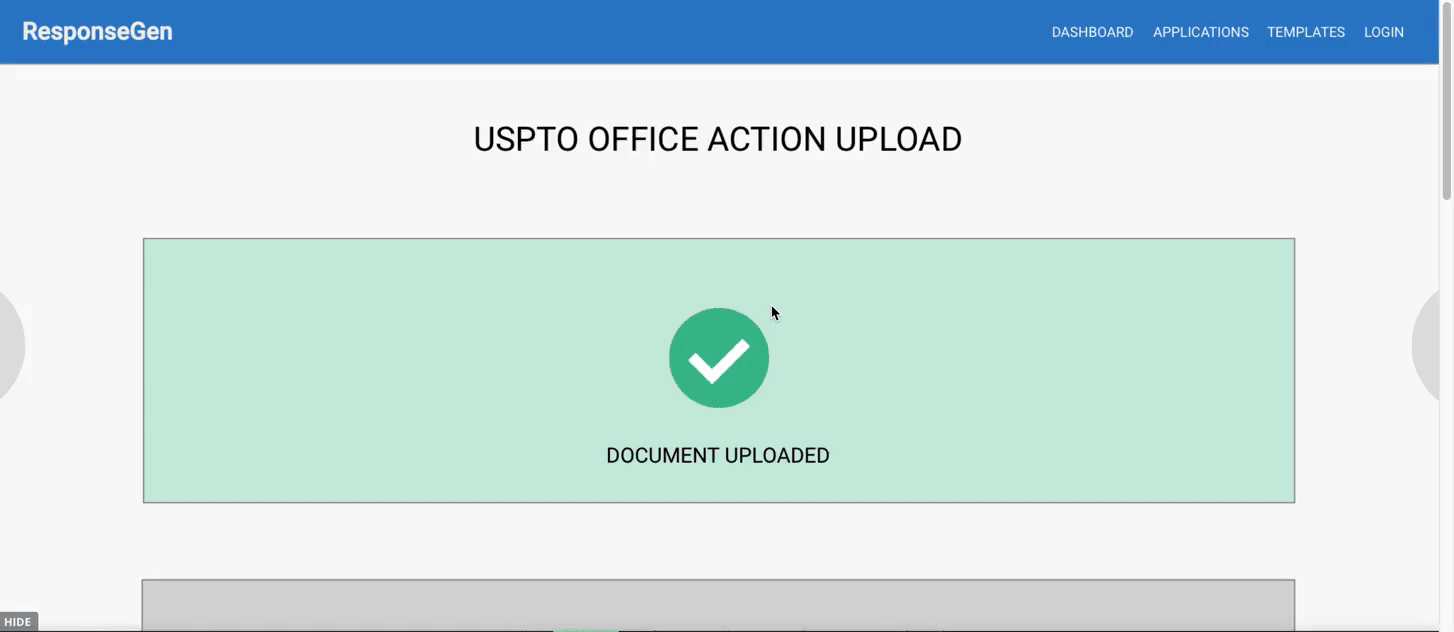
The Challenge
ResponseGen is a web-based application designed to assist patent attorneys in the patent application process. Specifically, it helps efficiently and contextually compile a response to patent claim rejections from the United States Patent and Trademark Office (USPTO) based on typical strategies for validating the initial claims made.
Though a baseline application has been established, ResponseGen’s creator, a patent attorney himself, is hoping to expand the feature sets and improve usability to allow for better integration into his own practice and potentially wider adoption among other patent-focused attorneys and firms.
The Approach
Cognitive Walkthrough
An initial cognitive walkthrough of ResponseGen afforded our team some familiarity with the tool’s functionality, as well as hypotheses and insights of potential usability improvements that we wanted to explore further.
These hypotheses and insights were used to create an outline for an in-person contextual inquiry with the original creator and active user of ResponseGen, in order to observe the way the tool fit within his day-to-day work. Observing a user in person in an environment that matches a typical working environment allowed us to gain further understanding into the tool’s effectiveness and usability when applied to actual tasks that he is trying to accomplish—the things that work well and the workarounds that he may have established to accommodate for difficult or poorly functioning features.
Contextual Inquiry
Research Synthesis
The results of the contextual were strikingly different than our team expected based on our initial walkthrough. While we imagined that system feedback for input formats and visual consistency would be key areas for improvement, the impact of instances of perceived violation was relatively low, even non-existent during the user’s actual work.
What presented much more difficulty to the user during our observation was the manual process of getting information into the ResponseGen tool, which involves running individual scripts to extract relevant information from official patent office documentation, and the high volume of research that often involves gathering data from many different sources. Additionally, collaborating with other attorneys and reviewing documents with clients is complicated by a web of phone calls, emails, and document uploads.
Low-Fidelity and Interactive Prototyping
Pivoting based on these new insights, I took our team’s research findings and focused on solving for three main areas: research efforts, response creation, and collaboration and review. Specifically, I wanted to find a way to:
remove the need for manual office action data extraction and processing to shorten the amount of time before a response can start to be created and aid in error prevention throughout the process.
double down on ease of response creation and editing to allow for more time crafting thoughtful response strategy and decrease time spent building a document structure.
move towards a single collaboration location and simplified sharing techniques.
To demonstrate these recommendations in way that would allow the user to explore them in a context similar to his everyday use, I created an interactive prototype and a walkthrough tour. Because the client is the creator of ResponseGen and the application is not yet ready for widespread implementation, the tour was personalized specifically for him.
Next Steps
In a legal practice industry typically marked by copying and pasting into and out of word processing documents, ResponseGen offers efficiency and flexibility that allows attorneys to focus on thoughtful strategy rather than document creation and administration.
Through a contextual understanding of the application and its use in the day-to-day workflow of a current user, the developed interactive prototype adds to the existing solution and provides ways for ResponseGen to offer better usability as an integrated part of the office action response process —for the client and potentially the patent attorney practice at large.


